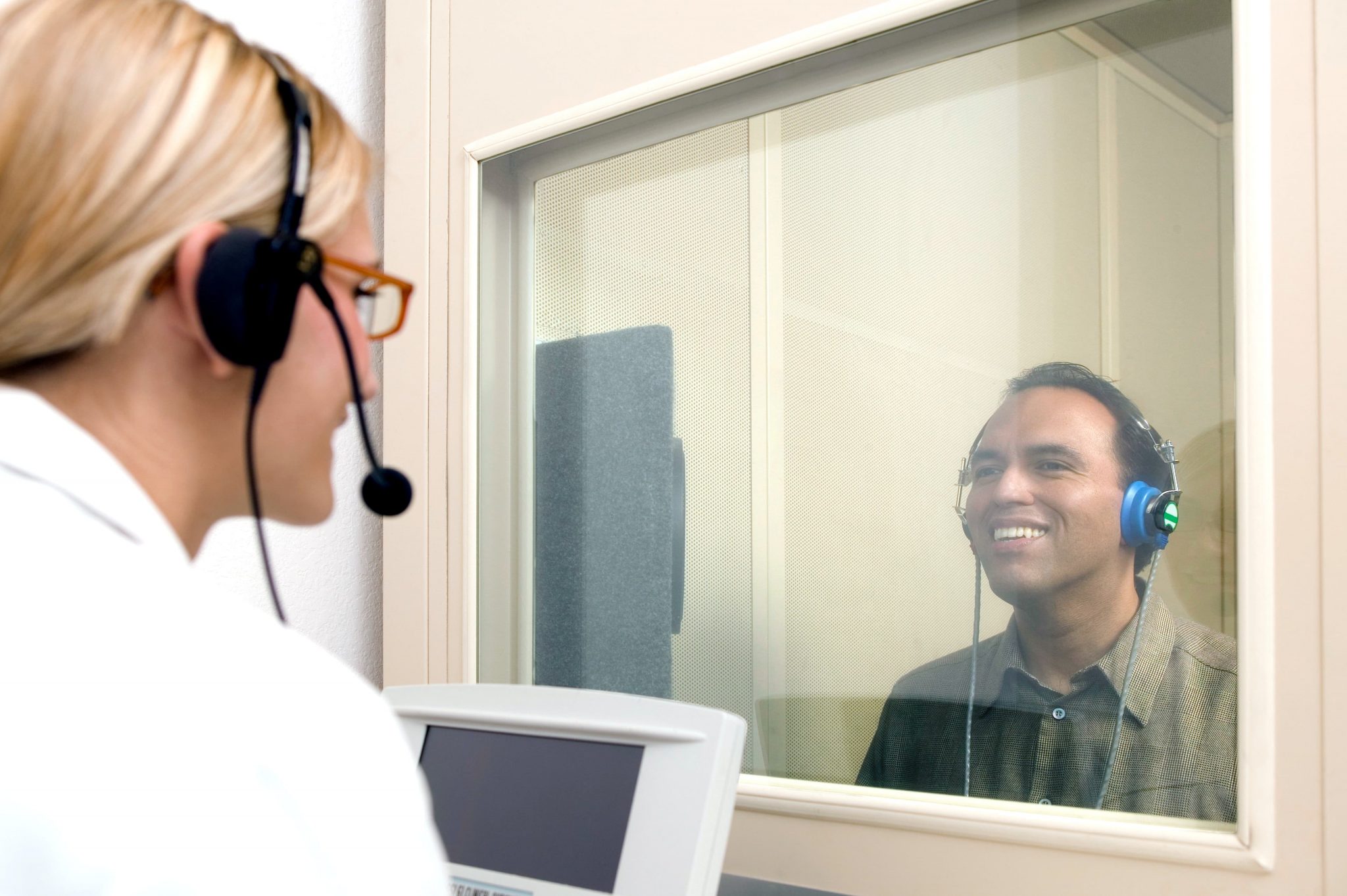The more severe your hearing loss is and the longer you’ve gone without rehabilitation, the more difficult it is to treat. In addition, hearing aids do not provide immediate restoration of your hearing the way glasses instantly correct vision problems. It can be a lengthy process that requires dedication to improve hearing and communication abilities. If you have untreated hearing loss, below are the first steps of the treatment process.
Get a Hearing Evaluation
It’s important to get a hearing test as soon as you start exhibiting symptoms of hearing loss. Early signs include:
- Turning up the TV louder than others prefer
- Ringing in the ears
- Difficulty understanding conversations in background noise
- Asking people to repeat themselves often
- Difficulty with phone conversations
Hearing evaluations involve a number of tests that will determine your ability to hear sounds at different pitches and volumes, your ability to understand speech and discriminate between similar sounds, how well soundwaves pass through your ear and how well your brain interprets these sounds.
During a hearing evaluation, your provider will also take a medical history. If you have hearing loss that is caused by an ear infection or impacted earwax, your provider will first treat the underlying condition. If your hearing loss requires further treatment, they will discuss your options with you.
Learn Your Options
Hearing aids are the gold standard of care for treating hearing loss. Most people with mild to severe hearing loss benefit from their use. Hearing aids are available in a variety of styles to match your aesthetic and lifestyle needs. Today’s hearing aids include state-of-the-art features such as Bluetooth connectivity, automatic programming and rechargeability.
For more severe cases of hearing loss, or if you’ve tried hearing aids and don’t experience much benefit, your provider may recommend a surgical solution such as bone anchored hearing aids (BAHAs) or cochlear implants (CIs). BAHAs treat conductive hearing loss, which means there is some sort of blockage or deformity of the outer or middle ear preventing sound from entering. CIs treat sensorineural hearing loss, which is the result of damage to the inner ear.
Commit to Your Rehabilitation Program
When you first try on your hearing devices, sounds may not seem quite the same as they did before you lost your hearing. It takes time for you and your audiologist to get the programming just right, and even more time for your brain to re-learn how to filter out ambient sounds, like the hum of the refrigerator, and focus on important sounds like people’s voices. Stick with it; in time, you’ll be communicating better than you have in years.
For more information or to schedule an appointment, contact Arizona Hearing Specialists today.
